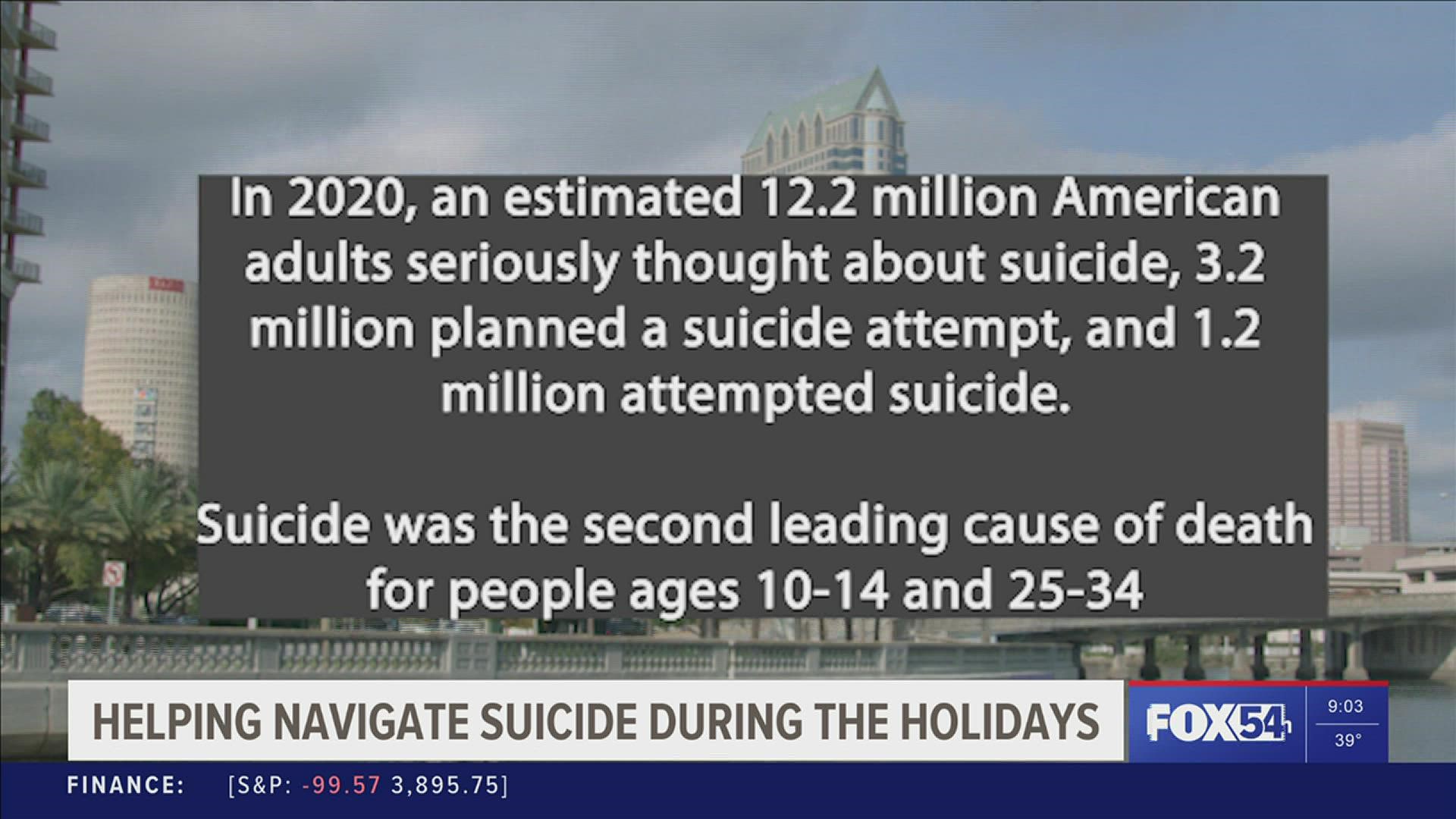HUNTSVILLE, Ala. — Twitch's sudden death shocked us all. According to Shannon LaFramboise, Ph.D., with Crisis Services of North Alabama, when you are used to seeing someone full of life, you hardly take time to notice anything else.
"He's such a lively personality, always smiling, you know, friendly and engaging," LaFramboise shares. "And so, it takes us to a place where we don't think we're supposed to go because he looks like he's doing fine."
While the CDC numbers of report suicide rates are higher in spring and fall, this time of year can also be hard on those struggling mentally. "People have lost work, wages, all of those things," LaFramboise shares. "And so, it becomes a really trying time. And then you've got people, you know, you've got to buy gifts for people. You've got to get out and socialize. You've got to put on that brave front. And so, it really the energy, the emotional energy sometimes isn't there."
Suicide rates increased 30% between 2000–2018 and declined in 2019 and 2020. Suicide is a leading cause of death in the United States,3 with 45,979 deaths in 2020. This is about one death every 11 minutes.3 The number of people who think about or attempt suicide is even higher. In 2020, an estimated 12.2 million American adults seriously thought about suicide, 3.2 million planned a suicide attempt, and 1.2 million attempted suicides.
Suicide affects all ages. In 2020, suicide was among the top 9 leading causes of death for people ages 10-64. Suicide was the second leading cause of death for people ages 10-14 and 25-34.
Some groups have higher suicide rates than others. Suicide rates vary by race/ethnicity, age, and other factors, such as where someone lives. By race/ethnicity, the groups with the highest rates were non-Hispanic American Indian/Alaska Native and non-Hispanic White populations. 3 Other Americans with higher-than-average rates of suicide are veterans, people who live in rural areas, and workers in certain industries and occupations like mining and construction.5,6 Young people who identify as lesbian, gay, or bisexual have higher rates of suicidal thoughts and behavior compared to their peers who identify as heterosexual.
While we may look for clear signs of someone struggling with suicidal thoughts, sometimes it might not be as clear. "If you see somebody whose smile isn't quite as broad as it usually is, or you see moments of sadness when you don't know that they have anything to be sad about," LaFramboise shares. "Maybe those zoning out or not going to those festivities and parties and things and not doing the things that they enjoy doing, giving away belongings. All of those things are signs and warning factors that somebody may be contemplating. So, anybody can ask somebody how they're feeling and if they're thinking of suicide. It doesn't take a professional."
Just being there can make all the difference in someone decision to live. "In the moment maybe, they don't appreciate it because they're like, 'I'm going through something right now', but you're distracting them," LaFramboise shares. "You're letting them know that you're supporting them and that you're worried about them and that you want them in this world because they belong in this world."
If you or someone you know are having suicidal thoughts, please dial 988 for the Suicide and Crisis Hotline or 256-716-1000
If you prefer text, text the number 741741. Both are available 24/7 through the holidays. Visit Crisis Center of North Alabama website for more on suicide and crisis prevention.

